
Experienced summer residents annually harvest a rich raspberry crop by making a full and timely top dressing of the bushes. This culture grows well and bears fruit on soils enriched with useful trace elements, minerals, nutrients.
It is important to regularly feed the soil in order to provide the berry with everything necessary - mineral and organic fertilizers.
It is recommended not only to build on generally accepted norms and the schedule of fertilizer application, but also to monitor the condition of the raspberry bushes themselves. It is worth paying attention to the color and integrity of the leaves, the presence of insects on the bushes, the thickness of the stems, the taste and appearance of the berries, etc.
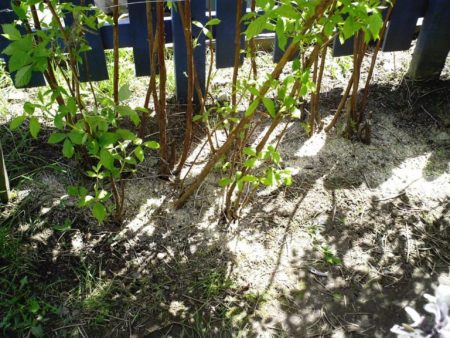
Content
Why you need to feed raspberries after harvest
Raspberries need timely nutrition throughout the season, from May-April to August-September. Fertilizer measures contribute to the intensive growth of bushes, the development of new shoots, and the formation of large berries.
Before fertilizing, analyze what type of soil raspberry grows on. Clay soil will require an increase in the amount of fertilizing by 1.5 times. Loamy and sandy soils require the introduction of mineral and nitrogen substances 2 times more often.
Fertilizing after harvesting will allow the crop to better prepare for wintering, make up for the deficiency of essential elements and minerals, strengthen raspberries, and create all the necessary conditions for intensive growth and fruiting in the next year.
Types of top dressing for raspberries
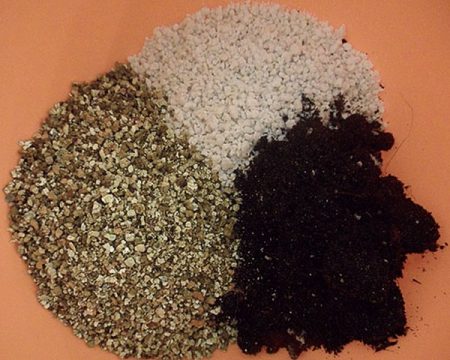
Raspberries need complete nutrition, rich in nitrogen, phosphorus, potassium and other useful elements and minerals.
If there is an opportunity to make an agrochemical analysis of the soil on which raspberry grows, do not miss this opportunity. Thus, you can find out exactly what additives should be added to provide full conditions for the cultivation of raspberries.
Timely application of fertilizers allows you to constantly maintain the bush with the necessary useful substances. Experienced gardeners make top dressing of the following types:
- potassium salt. A balanced composition that feeds the soil with potassium. The element is necessary for the formation of fruiting branches. An alternative to potassium salt is wood ash. Care should be taken in the method of obtaining it. Do not use ash after burning solid household waste;
- superphosphate. This is a complex fertilizer that not only contains phosphorus, but also magnesium, potassium, sulfur and other useful elements. Promotes resistance to diseases and parasites;
- nitrogen fertilizers. They contain the necessary elements for intensive growth and the formation of shoots. It is important to monitor the dosage and avoid excessive ingress of nitrogen into the ground so as not to cause oversaturation. Ready-made fertilizers are ammonium nitrate and urea.
Once a season, raspberries should also be fed cow dung. To do this, a shallow digging around the bushes is made, a rotted mullein is introduced in a thin layer, then mixed with the ground or covered with a layer of soil.
How to cook top dressing for raspberries in August-September
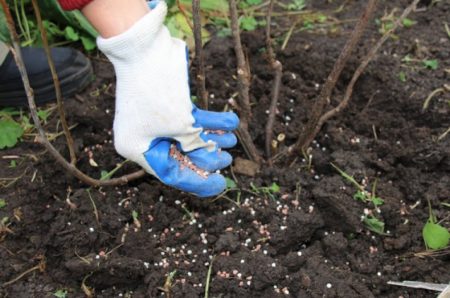
After the harvest, conducted in July and early August, depending on the region, fertilizing should be applied, which will restore the strength of the plant and prepare the basis for the full development of the bush in the next season.
If the bushes do not have an unusual color, spots, are not affected by disease or pests, under raspberry, it is necessary to make fertilizer and potassium fertilizers:
- potassium. Must be applied as a solution of wood ash. To do this, take 10 liters of heated water and 500 g of ash. Mix the solution thoroughly, cool and make at least 5 liters under each bush. You can also fertilize raspberries with potassium salt, which should be prepared in accordance with the instructions on the package - 40 g per 1 sq. m .;
- phosphorus. Add superphosphate in the form of finished fertilizer at the rate of 60 g of substance per square meter of raspberry.
Nitrogen in the fall under raspberries do not make. This will cause intensive growth of new shoots and weaken the plant before wintering.
Feeding should not be done on a hot day under the scorching sun and in rains. It is better to wait for moderate cloud cover and average temperature. This will prevent the rapid evaporation of moisture or dilution of the concentration and removal of groundwater.
An additional measure is to spray raspberries with a solution of boric acid and magnesium sulfate (10 g and 100 g of substance per 10 l of water, respectively).
How to feed raspberries
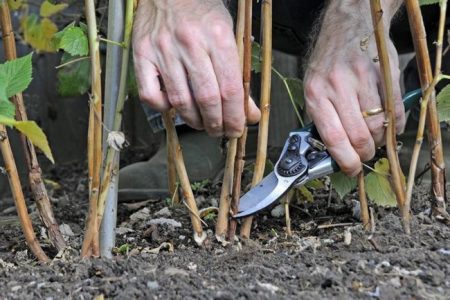
After harvesting the berries, raspberries should be prepared before feeding:
- remove weed grass;
- cut dry and damaged branches;
- loosen the soil around the bushes with a depth of not more than 10 cm.
All procedures must be carried out in clothing that protects the hands and body from possible cuts and bites of insects. Cultivate the soil with a special garden tool to avoid damage to the root system.
What and how to fertilize in the fall
During the season, the raspberry has spent a huge amount of resources on growth, fruiting and the formation of young shoots. A deficiency of essential nutrients, trace elements and minerals will affect yield next year. Therefore, it is required to fertilize raspberries not only before flowering and during the formation of berries, but also after harvesting, as well as with the onset of the autumn period.
In autumn, organic matter is required. This is an environmentally friendly dressing, rich in all necessary trace elements. As an organic fertilizer that is easily absorbed by the culture, it is:
- rotted cow, horse, bird manure. Before the cold, the substance is sprinkled under the bushes. Naturally, nutrients with rain enter the soil. Organics have a thermal effect. The processes occurring in manure are accompanied by a thermal effect. This will help the bush during cold weather;
- peat. Not only enriches the soil with useful substances and trace elements, but also improves the soil structure. Peat makes clay soil lighter and less dense. Sandy soil becomes more nutritious and more effectively retains moisture;
- compost. Effective top dressing, not inferior to the mullein in useful composition. A well-organized compost pit will not only save the summer resident from the issue of recycling organic garbage (peeling, peel, tops, old leaves, mowed grass, sawdust, paper, newspapers, etc.), but also act as a full-fledged fertilizer for berry crops.
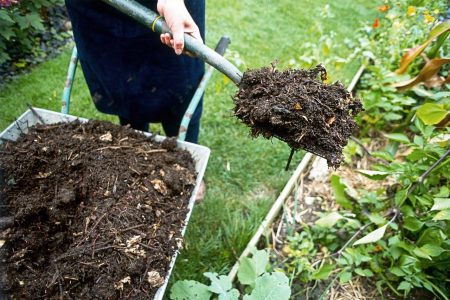
The norm of productivity is considered to be at least 1.5 kg per raspberry bush. If there are fewer berries, more fertilizer is required.
Tips of experienced summer residents
Gardeners with experience recommend taking measures in the form of effective top dressing and adjusting their volume with the following symptoms:
- weakened and pale young shoots signal phosphorus deficiency;
- yellow leaves with a green vein mesh mean a lack of iron;
- poor leaf growth and yellowing - a signal of a lack of magnesium;
- the brown color of the bushes is a sign of potassium deficiency in the soil;
- small leaf and low young shoots - there is not enough nitrogen in the ground;
- the dark color of the leaves and the abundance of young shoots is an abundance of nitrogen in the soil.
Gardeners also recommend thinking in advance about organic fertilizers. It is better to purchase manure and organize a compost pit in advance. Manure and compost will have time to overtake by the autumn season.
Reviews
Maria Peshkina, Nizhny Novgorod.
Previously, it was not necessary to fertilize raspberries. Well grows and grows itself, bears fruit every year. Only limited so as not to grow. But she saw from a neighbor that the harvest was so gorgeous and in August she was doing something with bushes. It seems to be already picked berries. She advised me to pour manure under the bushes. And indeed, the next year I took twice as much harvest.
Kaleria Ivanova, Penza.
With retirement, I became interested in planting my berries and canning. The raspberry plant organization was thoroughly approached. In accordance with the reference book of the gardener, I feed supplements on time. In autumn, raspberries need to be fed. In addition to ready-made fertilizers from superphosphate, I still make compost and sprinkle ash on it from the sauna stove. All season I collect cleaning, leaves, grass, weeds in a hole. It turns out a great nutrient substrate. Raspberry thanks me for the next season with a generous harvest of large ripe juicy berries. I take from the bush at least 2 liters.
Evgenia Polozova, Vladimir.
My husband and I love raspberries and organized near the house a plot of 3 hundred parts with short and tall bushes. I bring in saltpeter and potassium salt before flowering and then in late August and early September. Under the frost I bring in a rotted mullein. Once the whole season was absent and raspberries remained unfertilized. This immediately affected the harvest.
Conclusion
Raspberries, like any plant, require complete top-dressing and timely application of fertilizers. The most basic elements and nutrients are needed to create conditions for growth and fruiting - nitrogen, phosphorus and potassium. If you want to get a rich harvest of berries every year, take care of strengthening the plants after picking raspberries. The shrub will gratefully take care of itself and will delight you with a new, environmentally friendly, juicy crop.


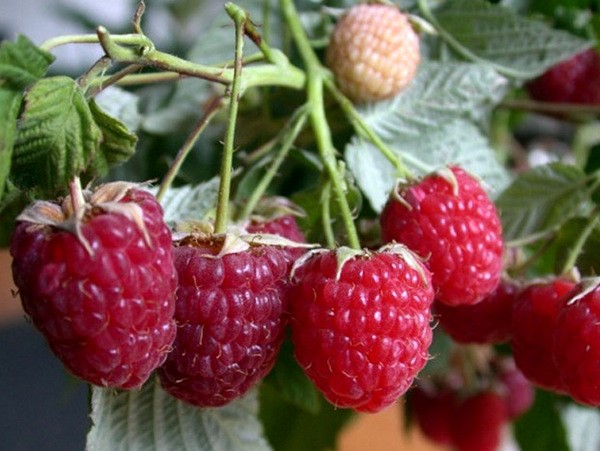
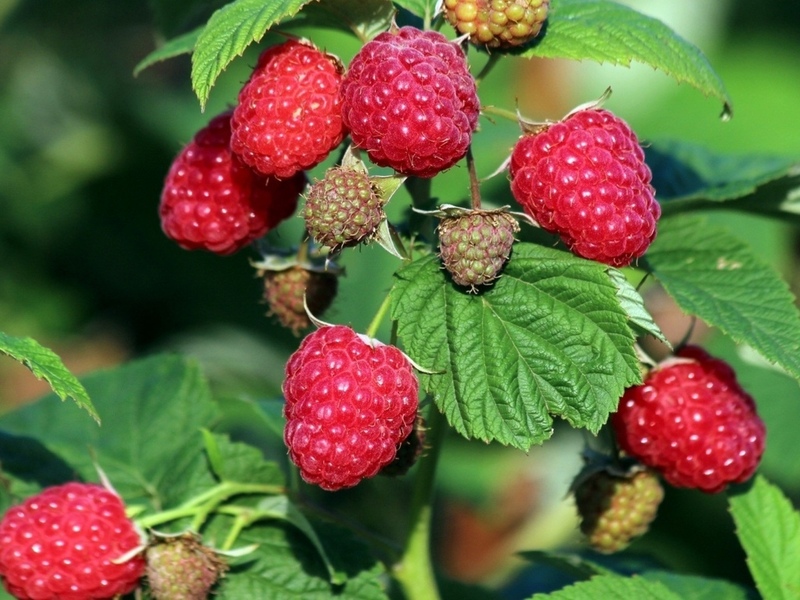
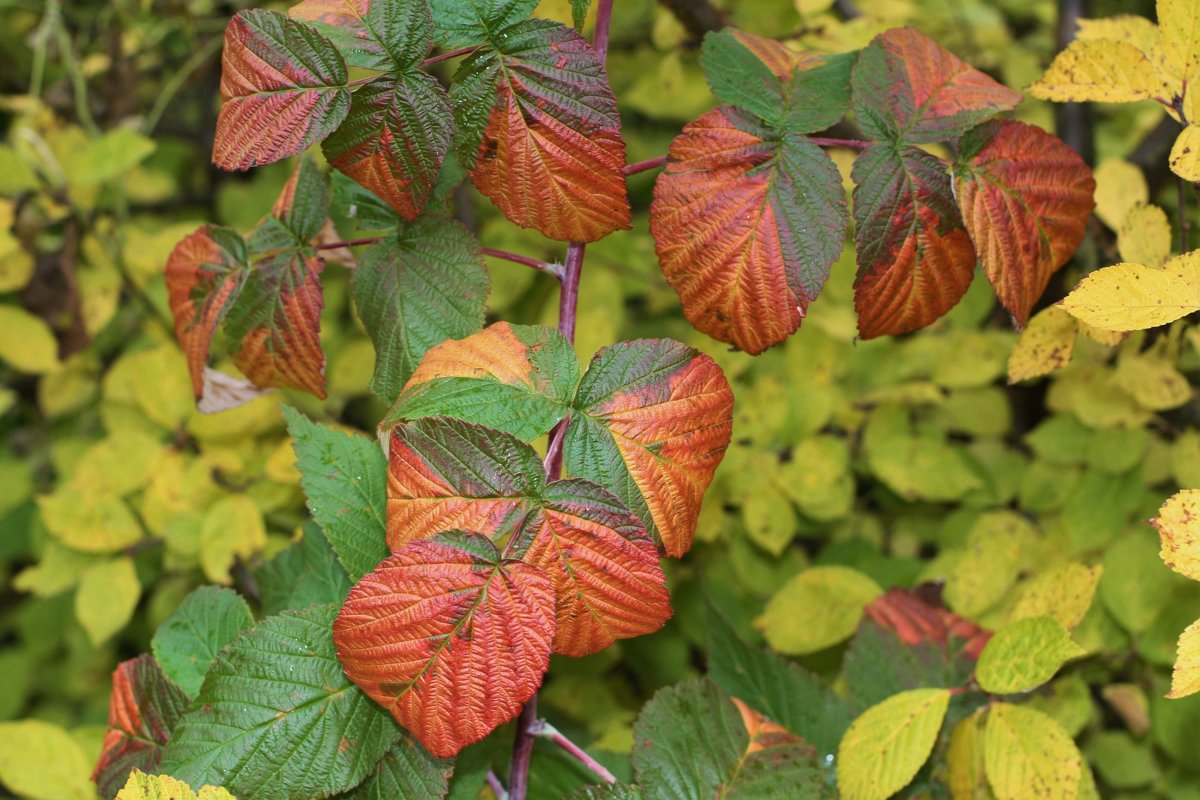 Black raspberries in autumn: care and preparation for winter shelter, pruning
Black raspberries in autumn: care and preparation for winter shelter, pruning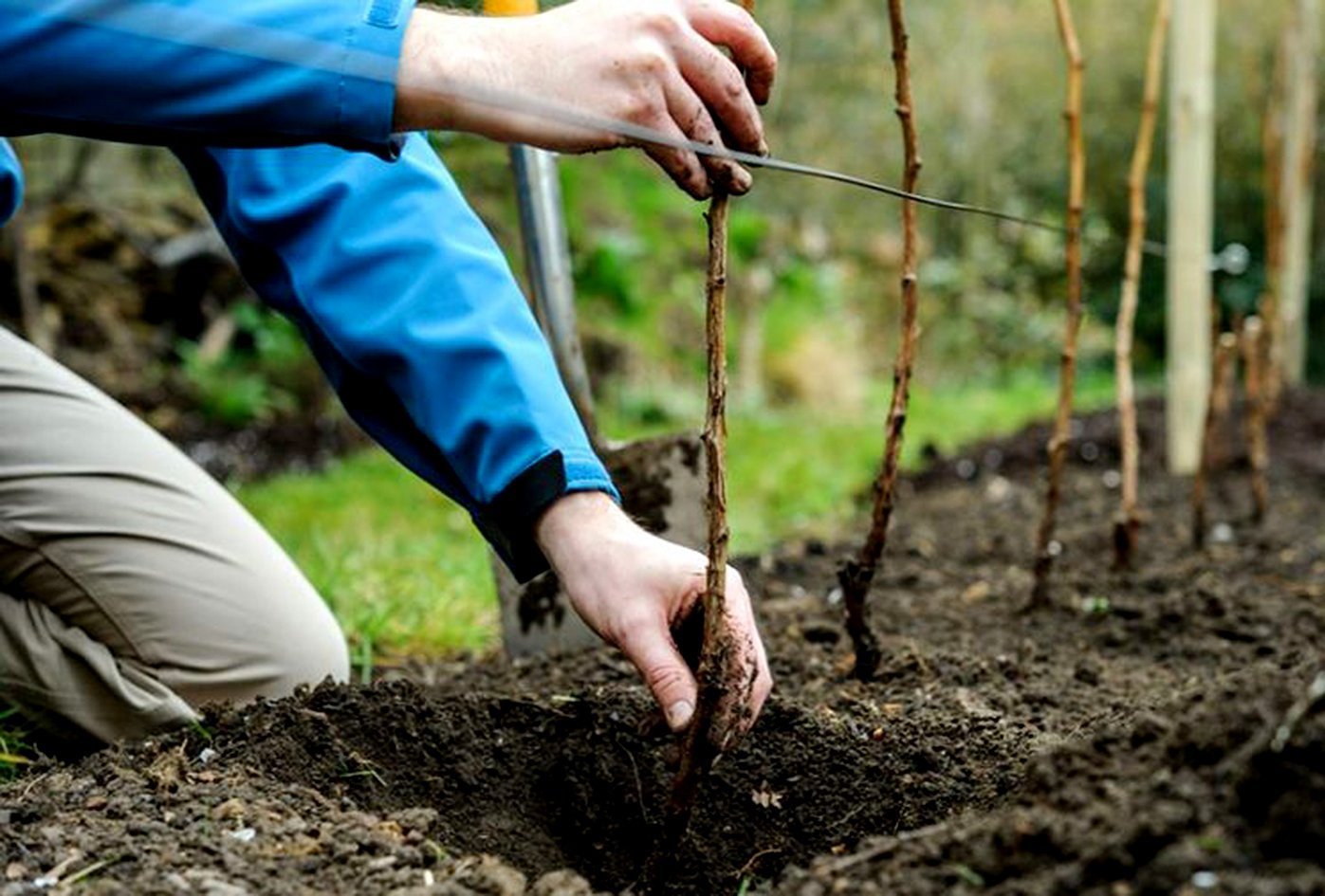 Features of planting raspberries in the fall and care for it
Features of planting raspberries in the fall and care for it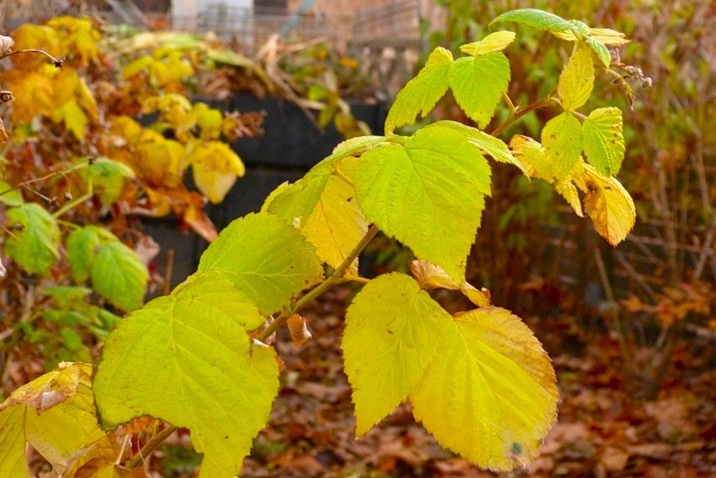 Proper care for raspberries in the fall and its preparation for winter
Proper care for raspberries in the fall and its preparation for winter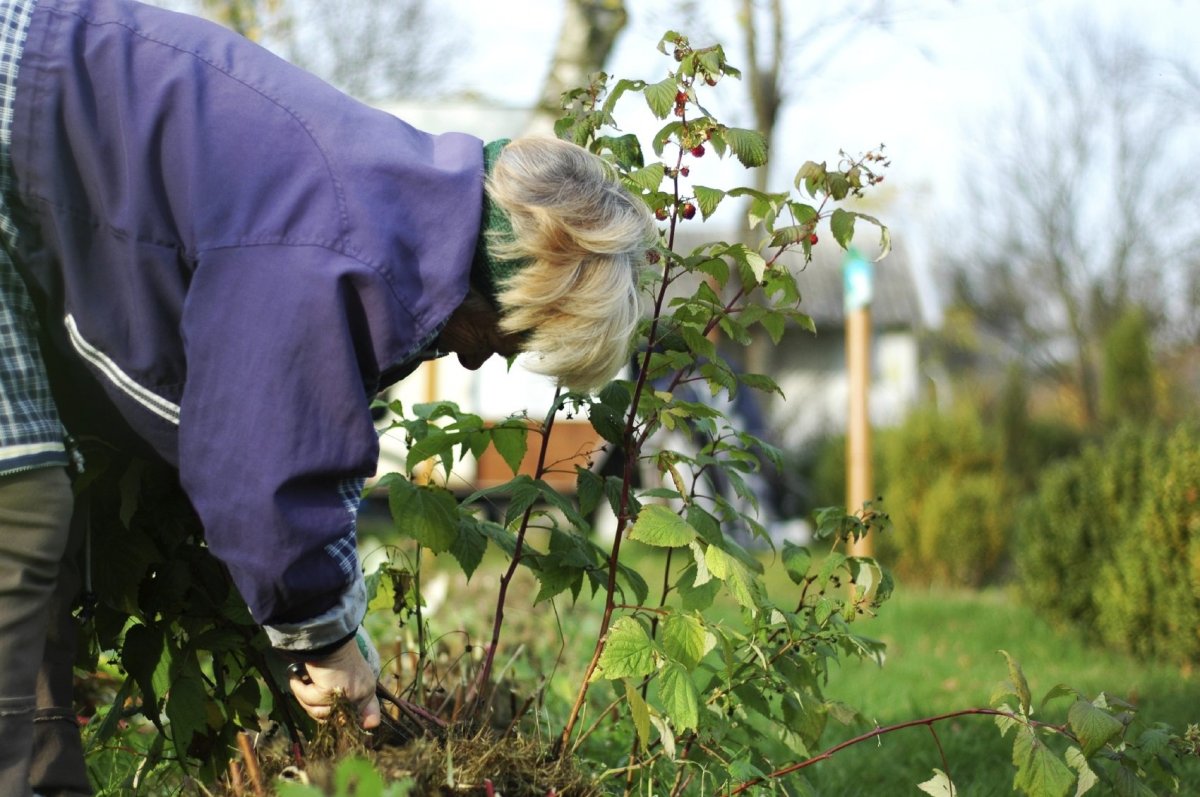 Care for maintenance raspberries in autumn: pruning and top dressing
Care for maintenance raspberries in autumn: pruning and top dressing